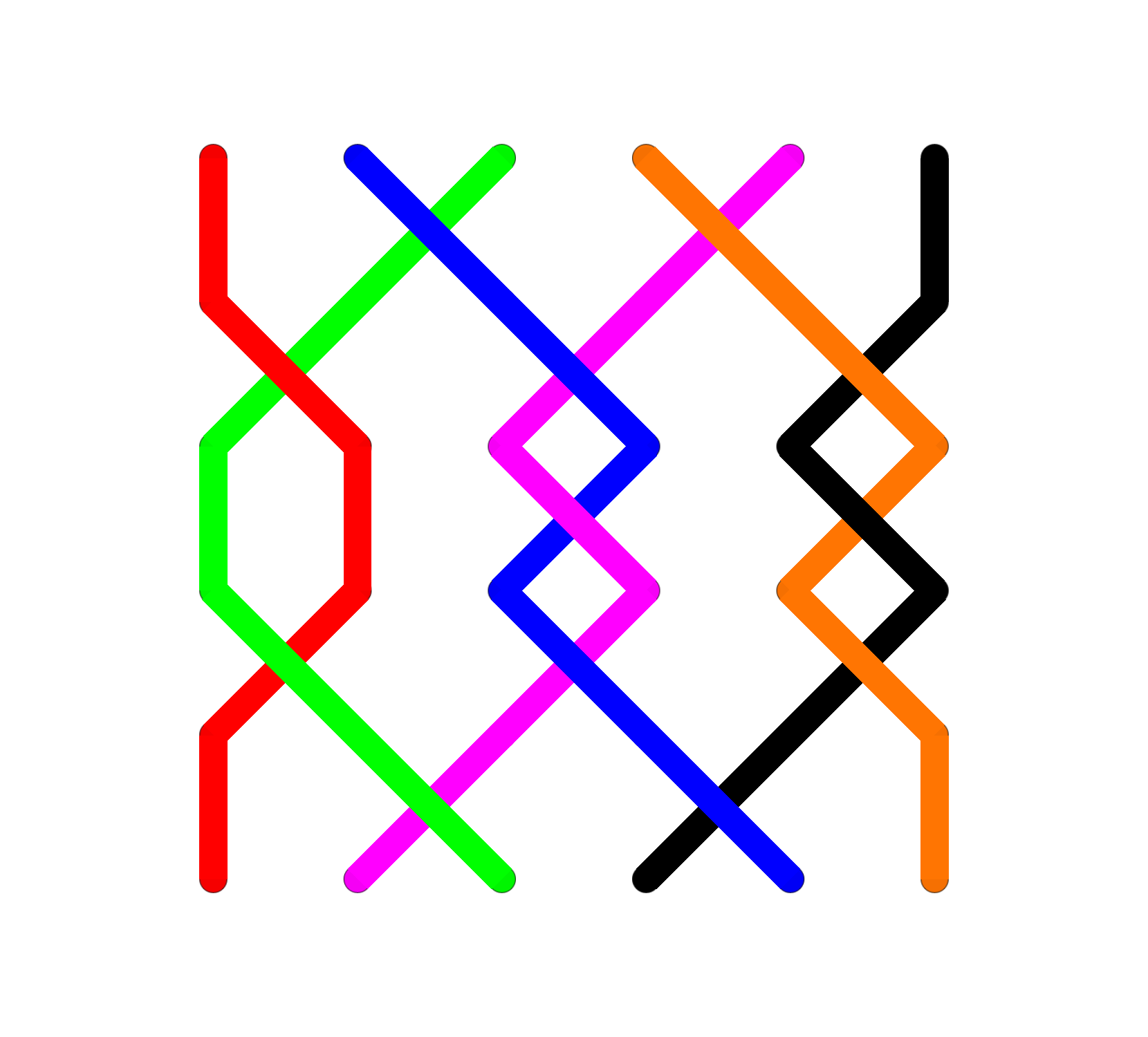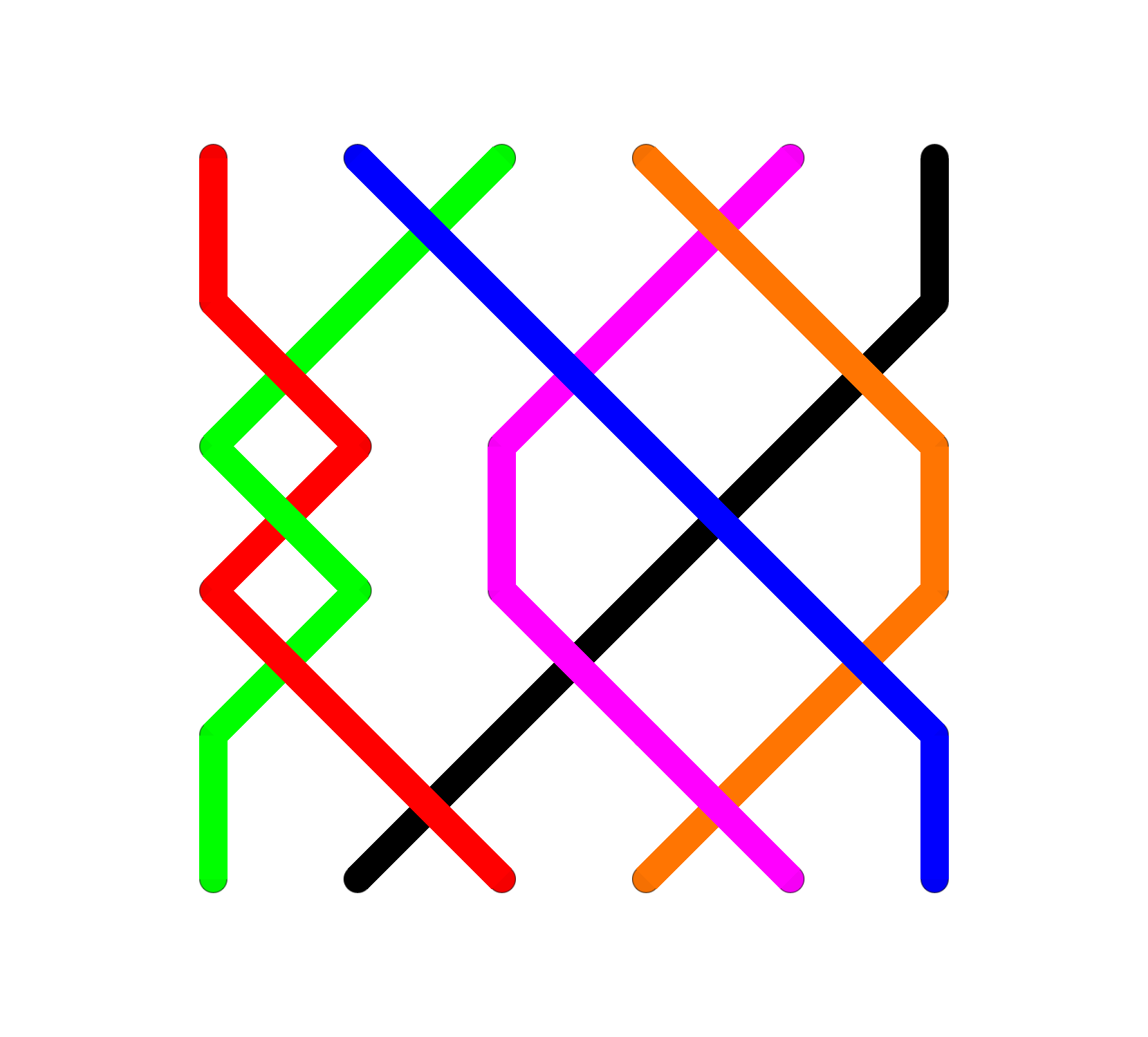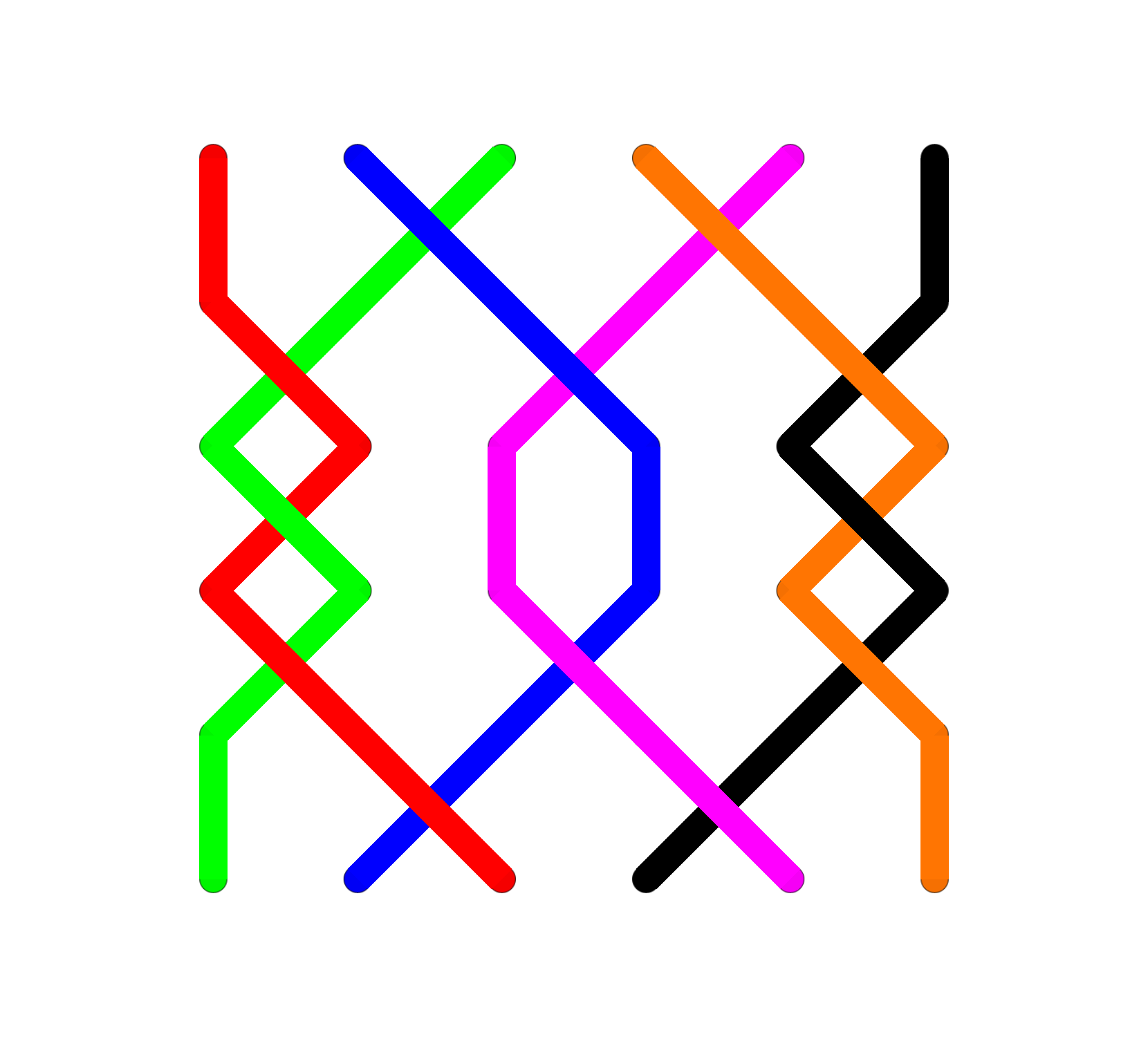Handbell Toolbox
6. Extending your method ringing
6.1. Ringing using place notation
Before we look at how to build up to ringing surprise methods, it will be useful to take a look at place notation − something we've talked about in previous pages, but not fully explored.
What is place notation?
Place notation is a short-hand way of describing a method without drawing a diagram. It is quite possible to ring handbells (particularly on 6 bells) using place notation and is a very useful way of communicating structure whilst ringing. For example, when ringing Oxford Treble Bob Minor, the conductor might well say "Treble is dodging in 1-2", which everyone interprets as "And 3 and 4 places is made here". Even the instruction "lead end now" in Plain Bob Minor tells the band to make seconds over the treble or dodge in 3-4 and 5-6. You might not think of this as ringing by place notation, but that's exactly what you are doing.
Place notation uses four different types of notation:
- An “x” means all adjacent bells swap position
- One or more numbers mean that a place is made in the positions indicated by the number(s)
- A “.” separates places if they come immediately after each other
- A “,” before the last numbers denotes that these places are at the lead head
Using these four types of notation, all the methods that have ever been rung on any number of bells can be defined with a single row of characters.
Plain Bob Minor – place notation is x16x16x16,12
St Clements Minor – place notation is x16x36x36,12
Cambridge Surprise Minor – place notation is x36x14x12x36x14x56,12
This series of characters defines the places that are made at each change. As methods are symmetrical, place notation is usually only written down for the first half lead i.e. until the treble rings at the back of the change.
Place notation on 6 bells
Right place methods on 6 bells have a limited number of building blocks based on place notation:
- (x16) is the plain hunt building block.
- (x12) is the block found at the Plain Bob lead end – seconds is made over the a bell, whilst the other bells dodge in 3/4 and 5/6.
- (x14) is the block found when a bob is called at the Plain Bob lead end – the bell making the bob makes fourths, whilst the other bells in 2/3 plain hunt and the bells in 5/6 dodge. It is also found at the half-lead in Little Bob Minor.
- (x56) is the block found at the half-lead in Reverse Bob or Cambridge Surprise Minor – one bell makes fifths under the treble, which the bells in 1/2 and 3/4 dodge.
- (x36) is the block found in St Clements or New London Bob – it causes a dodge in 1/2, two bells to cross or hunt in 4/5, whilst the bells in thirds and sixths place make a place.
By starting with Plain Hunt and gradually introducing new building blocks it is possible to learn to ring right placed methods using place notation.
Summary
Seconds place (x12)
Causes dodges in 3-4 and 5-6.

Thirds place (x36)
Causes a dodge in 1-2.

Thirds place (x34)
Causes dodges in 1-2 and 5-6.

Fourths place (x14)
Causes a dodge in 5-6.

Fifths place (x56)
Causes dodges in 1-2 and 3-4.

Exercises
A lined piece of paper along with a pencil is all that you need to construct a method using place notation. Select a Treble Bob or Surprise Minor method as it will have more rows to get the hang of the idea in comparison with a plain method. If you want, you could use the Cambridge Surprise Minor place notation from above.
Complex methods
London Surprise Minor
36x36.14x12x36.14x14.36,12
Cambrai Alliance Major
x38x14x18x12x18x3456x78,12
You can check your lines on this site.
